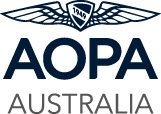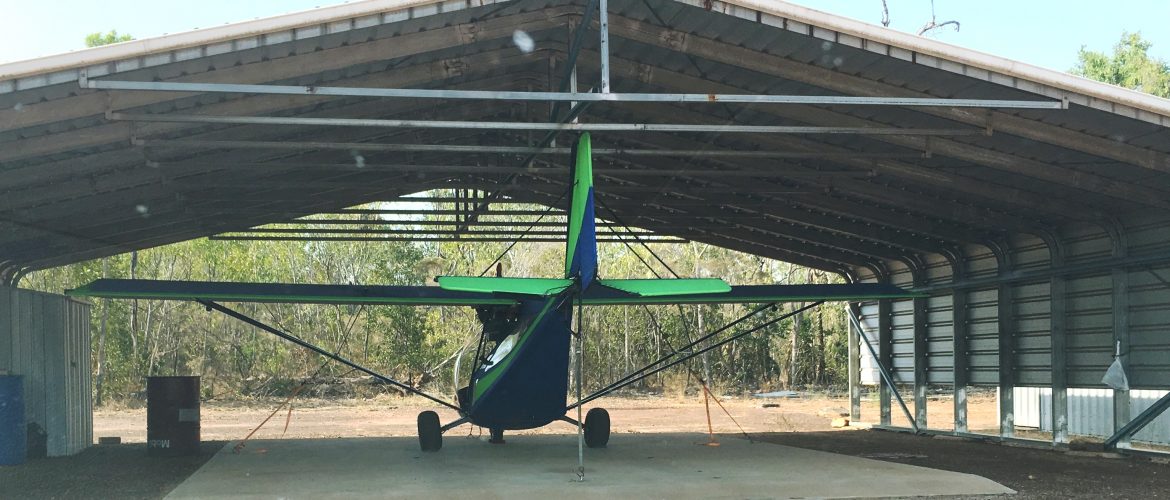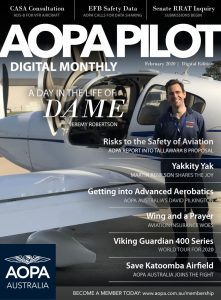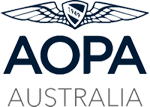When 72-year-old Steve Allen was planning his trip in anticipation of taking delivery of his Bat Hawk, the overwhelming issue was access to fuel. The Bat Hawk is not fast, and with headwinds most of the way it was often not possible to reach the next fuel stop – so he decided to carry two jerrycans strapped to the passenger seat and routinely land at station strips, town strips and even on a dirt road to refuel (from Jerry Cans) before continuing to the next fuel stop.
We’ve documented the purchase of the aircraft in Part 1; a two-seat, Camit-Powered 120HP aircraft that cruises around 70kts IAS, complete with tube airframe, canvas fuse and wings, a small zip-up rear baggage area and single central control stick. No autopilot. No mod-cons. And the air rushing past as fast as the aircraft is relatively flying against it.
Click to read Part 1: Swan Hill to Darwin in a STOL Champion
The settlement was uneventful and having flown in the RV-7A from a Darwin-Melbourne commercial flight to collect the Bat Hawk, the next phase was a test flight around the circuit, an overnight stay, before a trip to Bunnings to pickup supplies like Jerry Cans and basic hardware. Then to the supermarket for bottles of water, basic snacks and some foam to help make the contoured seat a touch more comfortable over the longer legs.
Leaving mid-morning the first day of flying saw Steve arrive at Broken Hill about half an hour before last light. Problem one. The Avgas bowser was broken and there was no fuel available. That meant he would have to do a ‘shuttle run’ with the Jerry Cans to a servo in town where he could get premium Mogas for the next leg. Inconvenient, where time was almost as precious as the fuel itself.
As he parked the plane in the fading light he was alarmed to see the left main wheel wobbling wildly. A quick looked revealed one wheel nut was completely missing and others were loose. He parked the plane, rented a car and drove into town to find a motel, knowing that he would be chasing repairs, as well as fuel in the morning.
The next day he spent visiting hardware stores, servos, and the airport. He was able to fix the wheel without too much ado and the aircraft was refueled and ready by early afternoon. That said, the wind had now come up to near gale-force and he reluctantly decided to stay a second night.
Departing Broken Hill early next morning meant heading for ‘One Tree Station’ for a jerrycan stop, then Tibooburra, then on to Noccundra, a very old and historic stone hotel with airstrip. They even had a Sunshine Coast band playing that night which he enjoyed – exhausted, but feeling as though progress was ever so slowly being made!
An early departure, without breakfast, a jerrycan refuelling stop and on to Windorah. There Steve was able to buy a frozen pie in the terminal building (honesty system), and grab a coffee as well as Avgas. Then on towards Winton, with a landing on a dirt road for the now operationally well-practiced ‘Jerry Can thing’ and a comfort stop.

Overnight in Winton after slow progress, another no-breakfast early start, flying over the Diamantina which is all channels (but no water), followed by a Jerrycan stop at McKinley town strip with road cone markers in the middle of the strip to mark the potholes. A safety-conscious touch, on the part of the operator before the repairs, could be made.
ONWARDS TO CLONCURRY – AND TROUBLE AHEAD!
During this leg Steve noticed the engine occasionally detonated – just a single thump, felt through the structure at first, but enough to skip a heartbeat Worried, but hopeful that it would improve, Steve climbed where the thumps gradually became more frequent and then continuous. The engine was still delivering power, but constantly shaking. He stayed up around 4000 feet and remained in sight of the Lansborough Highway below, still half an hour from Cloncurry. The expectation was that the engine would stop at any moment. He prepared for an inevitable forced landing in a suitable location, or a highway landing.
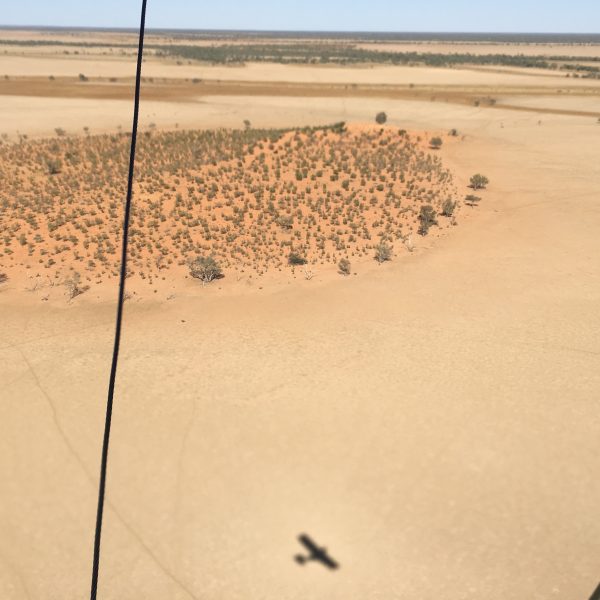
STEVE’S DIARY EXCERPT READS:
“Nicholas Christie (Sport Aircraft Sales) had been following me and keeping a SARTIME for me throughout the trip, as an aside service. I had a mobile signal and was able to text Nicholas and confer on my predicament. I had flown over so much utterly remote and desolate country but here I was, over a bitumen highway and had a phone signal – how good was that? Nicholas was ready to alert the authorities as soon as I gave the word – as soon as the engine stopped, which we both expected might happen at any moment.
Then the vibrating stopped for a few seconds and the engine ran smoothly, then back to shaking again. That told us both that it wasn’t a mechanical issue, but most likely bad fuel.”
Steve continued on, finally making it into the circuit area and landing without incident.
“Welcome to the ground!” was Nicholas’ friendly response.
“It was really nice to have someone to communicate with throughout the ordeal”, explained Steve as we caught up for a chat at AusFly.

Having landed safely at Cloncurry Steve did a thorough fuel drain and was surprised to find the sample was clear and clean! A strange anomaly that may have indicated old / off fuel or contaminants other than water that caused the issue.
A further check was to drop the carburetor float bowl and he found that was also completely clear and clean. The engine had been running smoothly during approach and landing, so it appeared the problem was well and truly over. He refuelled, and orbited to ensure smooth running, then Steve set course for Gunpowder to the northwest where he intended to top up from Jerry Cans before continuing to Adels Grove for the night.

Arriving at Gunpowder, Steve found the strip with a lot of trees growing on it! It really wasn’t a suitable landing area so he decided to divert to Mount Gordon, a top-class bitumen strip reserved for mine use only. Knowing that he was potentially ‘in distress’ if he couldn’t find somewhere to land and refuel, he felt that he would be welcomed. That is if anyone was there. The place was utterly deserted.
Next stop, Adels Grove; a remote resort in the Lamington National Park but Steve knew that they had experienced a disastrous fire which tore through the resort some months ago, so he didn’t know what to expect.
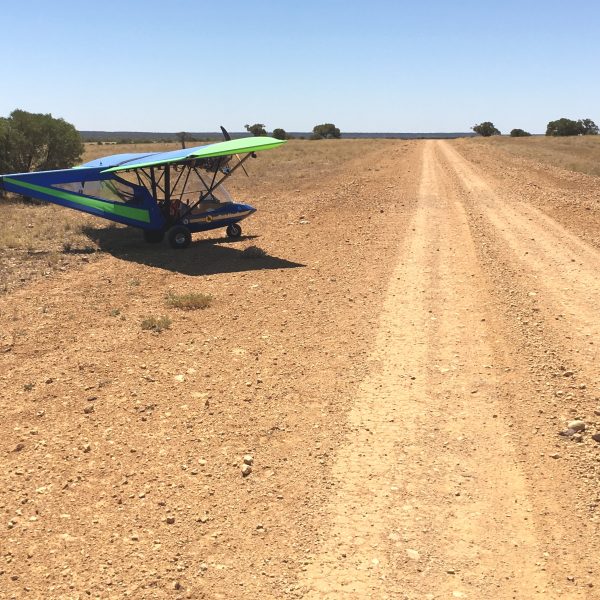
The people at Adel’s Grove have made remarkable strides in recovering from the fire, with new accommodation units and temporary kitchen and dining areas. The plane was refueled with Avgas, and Steve enjoyed a welcomed roast dinner that evening before departing to the west to Brunette Downs, a vast cattle property of over 12,000 square kilometres, with around 70 staff and up to 100,000 cattle!
Some years ago Steve had stayed there to run motorcycle rider training for a bunch of new jackaroos. On their way to the homestead in the station Cessna 206, they crossed a vast inland sea, but this time, apart from a small pool behind the homestead, it was all completely dry.
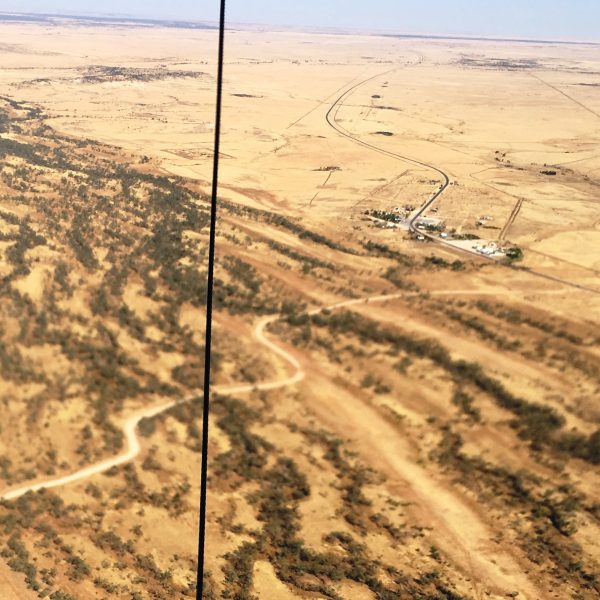
Finally arriving at Elliott aero (smack in the middle of the Northern Territory) for a Jerry Can top-up, Steve then flew slowly on to Dunmarra, a roadhouse about 600km south of Darwin. He filled up with premium Mogas and stayed the night to rest a now weary body.
There remained one refueling stop between Steve and his home Airport of Emkaytee, 16 miles south of Darwin International airport.
But the fuel was at Tindal, a military air force base for Super Hornets. Much of the time the tower is closed and the aero reverts to a CTAF. However, military-controlled airspace was due to be declared at 0900 the following morning, precluding Steve from flying in for fuel.
The solution? Get there, get in, get fuel and get out before 0900! A tough ask in the Bat Hawk!
THE FINAL LEG, AND THE ARRESTER CABLES!
At Dunmarra Steve was 2 hours from Tindal, so he took off at first light, literally. Airborne by 0600 he discovered that the headwind was also up early and slowing him down. This initially indicated that he wouldn’t get there until near 0900, too late to get fuel, however, by flying low he gained groundspeed and reduced his flight time, landing 45 minutes before the Tower became active and closed the surrounding airspace.
Tindal has fast jet arrester cables situated three hundred metres from each end of the 2.2km runway. When the aero is a CTAF, the cables remain down unless the power fails, in which case they automatically deploy, rising to sit 100mm above the surface of the runway, enough to rip off the nosewheel and turn the Bat Hawk on its back. Light aircraft are advised to operate between the cables, just in case.
He refueled, taxied out and took off before the first cable – plenty of room; airborne ten minutes before the airspace became active with just three minutes to spare.
A comfortable two hour run over familiar territory brought Steve to my home aero where his eager but supportive wife was waiting!
“When I got home I was sort of shell-shocked from the days of intense focus, planning, concentration and a fair bit of anxiety. Finally, I could relax.
People said I was mad to do it, and perhaps I was, but at 72 years old, I need that stuff to keep me going!”, he said as we downed a beer and thanked each other for the experience.
Well done Steve, from all of us at AOPA Australia. The flight is a long one in that aircraft and shows the capability and resilience of both the aircraft and pilot.
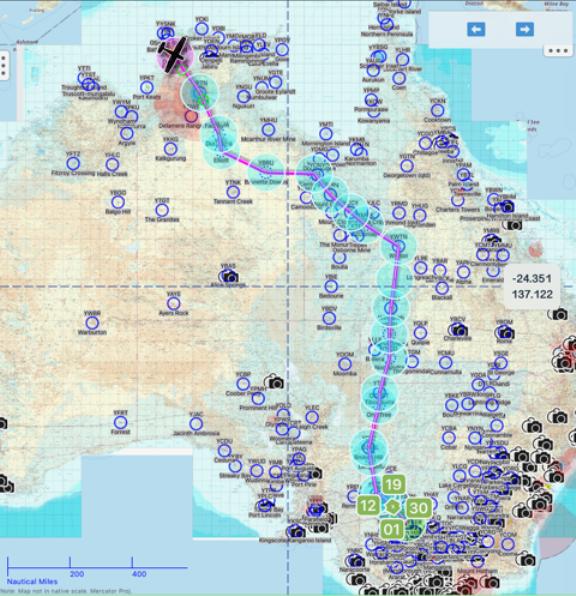
FLIGHT SUMMARY
The route took me north from the Riverina through western NSW, Western Queensland, then into the Northern Territory. For much of the way, the scene was of desolation, especially with the drought.
YSWH to YMKT. 6 days total, Wed 1200 local to Tues 1100 local.
5 flying days. 29.3 hours. 1800nm. 19 landings, as follows.
Wednesday 2 October
From Swan Hill to –
Wentworth YWTO. the story, Riverina views
Langwell Station OZLLL (jerrycan refuel)
Broken Hill YBHI. the story about loose wheel
3.8 hours flying
Thurs 3
No flying. Broken down at Broken Hill! No Avgas. Jerrycan shuttle refueling.
Fri 4
From Broken Hill to –
One Tree Station OZOET (jerrycan refuel)
Tibooburra YTIB
Noccundra Hotel YNCD story, historic pub
4.4 hours flying
Sat 5
From Noccundra to –
Plevna Downs YPVD (jerrycan refuel)
Windorah YWDH
Dirt road on Westerton Station (jerrycan refuel). story
Winton YWTN
6.0 hours flying
Sun 6
From Winton to –
Mckinlay YMCK (jerrycan refuel)
Cloncurry YCCY. story about bad fuel
Mount Gordon YGON. story about “Gunpowder”
Adel’s Grove YALG. story, disastrous fire.
5.6 hours flying
Mon 7
From Adel’s Grove to –
Brunette Downs YBRU. the story about motorcycle training, inland sea
Elliott YELL (jerrycan refuel)
Dunmarra. OZDUA
4.5 hours flying
Tue 8
From Dunmarra to –
Tindal YPTN story about airforce base, fast jets, the timing for refuel, arrester cables
Emkaytee YMKT. Home, own hangar, shell shocked
4.4 hours flying
